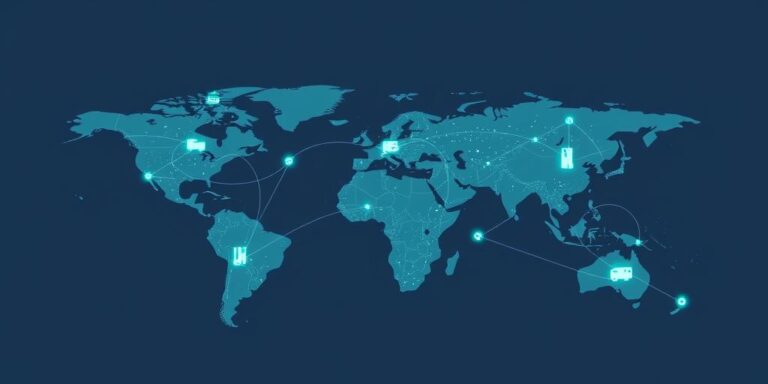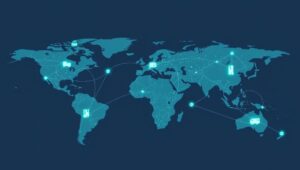Supply Chain Visibility with IoT: End-to-End Tracking (2025)
In today’s complex global marketplace, supply chain visibility is no longer a luxury—it’s a necessity. Businesses need to know where their products are, what condition they’re in, and when they’ll arrive. The Internet of Things (IoT) offers a powerful solution for end-to-end supply chain tracking, and by 2025, it will be integral to efficient logistics.
The Challenge of Traditional Supply Chains
Traditional supply chains often rely on manual processes, fragmented systems, and limited data sharing. This lack of transparency can lead to:
- Delays and disruptions
- Inventory inaccuracies
- Increased costs
- Reduced customer satisfaction
IoT technology addresses these challenges by providing real-time visibility into every stage of the supply chain.
How IoT Enhances Supply Chain Visibility
IoT devices—such as sensors, RFID tags, and GPS trackers—can be attached to products, containers, and vehicles to collect and transmit data about their location, condition, and movement. This data is then analyzed and visualized on a central platform, giving businesses a comprehensive view of their supply chain.
Key benefits of IoT-enabled supply chain visibility include:
- Real-time tracking: Monitor the location and status of goods in transit, from the factory floor to the customer’s doorstep.
- Condition monitoring: Track temperature, humidity, shock, and other environmental factors to ensure product quality and prevent damage.
- Predictive analytics: Use data to identify potential disruptions, optimize routes, and improve delivery times.
- Improved efficiency: Automate processes, reduce manual errors, and streamline operations.
- Enhanced security: Detect and prevent theft or tampering of goods.
Use Cases for IoT in Supply Chain Management
IoT technology is being used in a wide range of supply chain applications, including:
- Warehouse management: Track inventory levels, optimize storage space, and automate picking and packing processes.
- Transportation: Monitor vehicle location, fuel consumption, and driver behavior to improve efficiency and safety.
- Last-mile delivery: Track packages in real-time, provide customers with accurate delivery estimates, and optimize delivery routes.
- Cold chain monitoring: Ensure the safe transportation of temperature-sensitive goods, such as pharmaceuticals and food products.
Looking Ahead to 2025
By 2025, IoT will be even more deeply integrated into supply chain management. We can expect to see:
- Increased adoption of 5G: Faster and more reliable connectivity will enable real-time data transmission from even more remote locations.
- Greater use of AI and machine learning: These technologies will be used to analyze data, predict trends, and automate decision-making.
- Expansion of blockchain technology: Blockchain will enhance security and transparency by providing a tamper-proof record of transactions.
- Focus on sustainability: IoT will be used to track and reduce carbon emissions, optimize resource utilization, and promote sustainable practices.
Conclusion
IoT is transforming supply chain management by providing end-to-end visibility, improving efficiency, and enhancing security. As technology continues to evolve, we can expect to see even more innovative applications of IoT in the supply chain, helping businesses to stay competitive and meet the ever-changing demands of the global marketplace. Embracing IoT in 2025 is not just about adopting new technology; it’s about building more resilient, responsive, and customer-centric supply chains.




